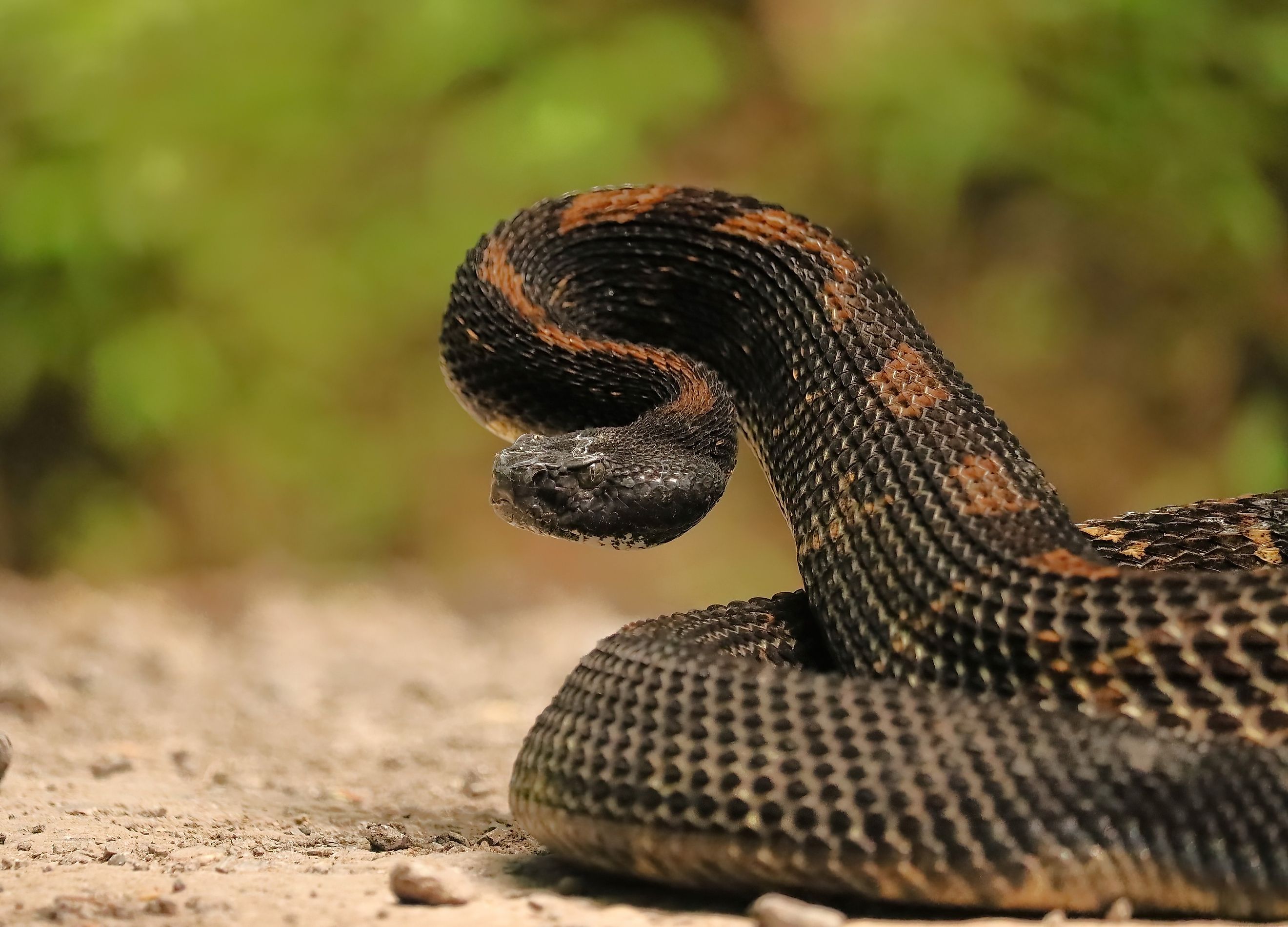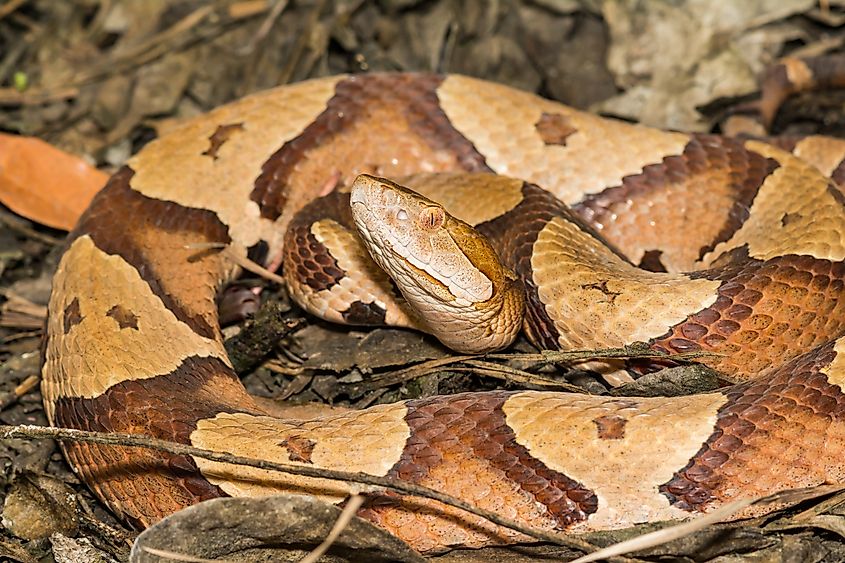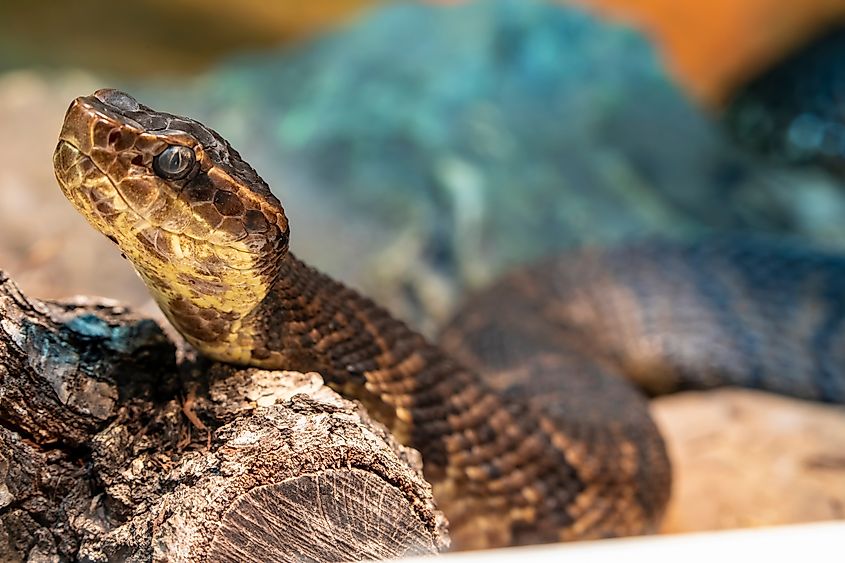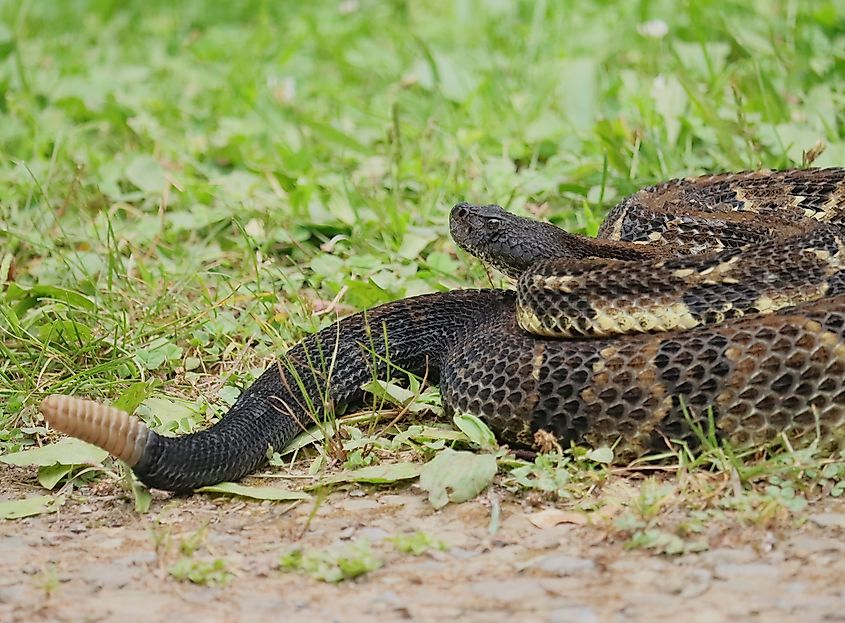
The Venomous Snakes Of Missouri
Missouri is located in the mid-west of the United States and is known for its prairies and its share of the Ozark Mountains. When you think of states where venomous snakes reside, Missouri is probably not even in the first five you would think of. This would be a fair assessment, as there are only five known species of venomous snakes within the state's borders. This article will describe each of them in detail so you can know how to identify them and react in the very unlikely scenario in which you come face to face with one. As the state houses some species, like the highly venomous northern cottonmouth, learning about these snakes can make a trip or stay in Missouri much safer.
Eastern Copperhead - Agkistrodon Contortrix

Commonly known as simply the copperhead, the eastern copperhead is found throughout the Eastern and Central United States. Despite being a venom-producing viper, the diet of the Copperhead primarily consists of insects and small rodents. They tend to eat mice and voles in the wild but often also stick to eating things like dragonflies, beetles, spiders, and grasshoppers. Copperheads prefer to stay in deciduous woodland and rocky outcrops, though they can eke out a living in a variety of biomes. They grow between 20 and 40 inches, with broad heads, a pinkish-tan hue, and darker brown bands along their sides.
The eastern copperhead also accounts for nearly half of the reported snake bites throughout the United States. However, this is not due to any aggression; it is simply because they seem to lack the instinct that causes them to slither away when a large threat, such as a human, passes by. Instead, these snakes freeze in place, leading to close encounters. Many of the reported copperhead bites are received by people who were not even aware the snake was there and unknowingly step on the small creature as they pass by. Luckily, their venom is among the least deadly of all known vipers, likely due to their insectivorous diet. Common symptoms include pain, swelling, nausea, and, in rare cases, muscle damage. While bites are rarely fatal, hospital care should be sought out regardless.
Northern Cottonmouth - Agkistrodon Piscivorus

One of the world's only species of semi-aquatic viper, the northern cottonmouth's diet consists primarily of fish, if you couldn't tell by the second half of its scientific name, Piscivorus, meaning fish-eater. They are the largest species within the Agkistrodon genus and are usually between 25-40 inches long, though the largest known specimen was 74 inches long. For the most part, they are dark in hue, almost black, though they have been known to vary from brown to gray, to tan, even olive. They make their habitat near bodies of water, as their diet primarily consists of fish, as previously mentioned. Bites from these snakes are very rarely fatal, though their venom is more potent than the eastern copperhead. As you would expect for any venomous snake bite, medical care should be sought out immediately. With bites to the extremities, amputations have been known to be necessary in rare cases where people wait too long to seek treatment after being bitten. However, in most cases, symptoms include swelling, severe pain, and localized bruising.
Timber Rattlesnake - Crotalus Horridus

The timber rattlesnake is the only known species of rattlesnake in most of the Northeastern U.S., though it is one of three species of rattlesnake in Missouri. Their average adult length ranges from 40-60 inches, and they are typically yellowish-brown, with dark brown or black crossbands along their body. These snakes prefer thick, deciduous woodland with rough terrain but can also be found in lowland cane thickets, the high areas around swamps and floodplains, and pine forests.
Timber rattlesnake’s primary prey source is small mammals, but they have also been known to hunt birds, frogs, and the like. The snake itself is considered to be one of the most dangerous species in North America due to the size it can reach, how long their fangs are, and their comparatively high venom yields. However, the snake's temperament and how much of the year they spend brumating (similar to hibernating, but for reptiles) offsets these other factors. The timber rattlesnake will almost always spend a good deal of time issuing warnings, rattling, and feint-striking to ward off predators before they resort to biting. In the rare case of bites, they can be lethal, but only if medical care is not sought out immediately.
Western Pygmy Rattlesnake - Sistrurus Miliarius Streckeri

The western pygmy rattlesnake is a species of pit viper rattlesnake found throughout the Southeastern United States. They are typically small in length, though bulky, averaging between 16-25 inches in length. Their coloration is often a pale silver-blue, almost white, with many black splotches and some smaller, yellowish-brown splotches between them. Being a smaller species, this pygmy rattlesnake prefers habitats with plenty of ground foliage to use as cover. They can be found in floodplains, sandhills, marshes, and flatwoods and eat mostly small mammals, birds, frogs, insects, and reptiles such as lizards or other snakes. Being so small and eating such small prey, their venom yield is very shallow, and they are unable to deliver a lethal bite to a human being. Regardless, a bite can be very unpleasant, and medical care is recommended.
Eastern Massasauga Rattlesnake - Sistrurus Catenatus Catenatus

The eastern massasauga rattlesnake ranges from Southern Ontario in Canada all the way south to Texas. These snakes will eat insects, but their diet primarily consists of small mammals, other reptiles, and bird eggs. They are typically gray or tan as a base, with large, round splotches of brown or black and three smaller rows of splotches in alternating colors along their sides. It's also not uncommon for this snake to have melanism, rendering them mostly black. The massasauga rattlesnake is timid and will avoid humans whenever possible. Like the Eastern Copperhead, most bites have occurred when people are trying to handle the snake or have stepped on one by accident. The only known deaths from this snake's venom have been in cases where the individual did not seek medical treatment following their bite.
Wrapping Up
While the phobia of snakes is quite common, it should be noted that they will always prefer to avoid engaging with humans over biting them, and if they bite, it is only because they feel sufficiently threatened or cornered. From the stealthy Eastern Copperhead, known for freezing in place, to the more aggressive Northern Cottonmouth, these creatures are best appreciated from a distance. While the risk of fatal bites is minimal, understanding these snakes and their habitats is crucial. Recognizing their patterns, behaviors, and preferred environments can help residents and visitors coexist safely with Missouri’s venomous wildlife.











